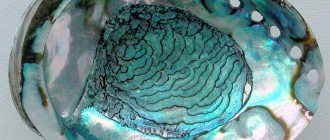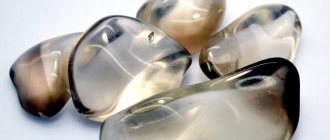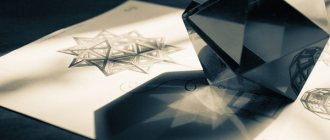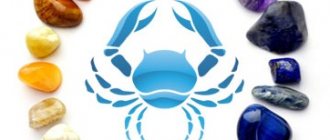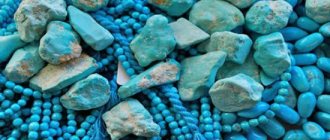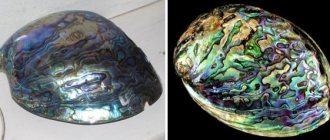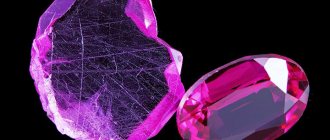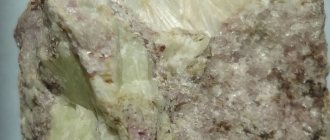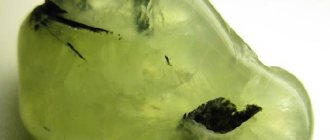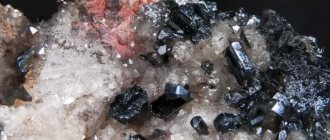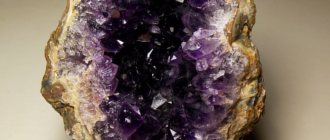What is mother of pearl
During its life, the oyster produces a secretion that protects it from pathogenic and traumatic agents. This substance coats the inner walls of the shell and is involved in the formation of pearls.
Mother of pearl refers to both the organic substance itself and the inner surface of the shell, covered with a mineral secretion. Shell fragments, as well as the pearls themselves, are used by jewelers to create accessories and jewelry.
A variety of colors and iridescent tints give the mineral a unique appearance and charm. Thanks to these features, gemstone products are highly valued among jewelers and collectors.
Varieties and colors
Like pearls, nacre can be either river or sea. However, this feature does not significantly affect the appearance of the stone. The properties of the water and the oyster itself are more important.
Mother of pearl has a layered structure, and each layer may differ from the previous one. Due to this, a specific shell color is formed. The stone itself has many shimmers and complex shades.
Colors may vary depending on lighting.
The following shell colors are more common:
- white;
- gray;
- silver;
- cream;
- pinkish;
- golden;
- copper;
- brownish;
- olive;
- black.
White mother-of-pearl is the most common type. Oysters that produce this pigment are the most common.
Rare and expensive varieties of stone include dark gems. More often, a similar color can be seen in marine representatives. Such minerals are distinguished by a richness of shades. In the light, dark colors glow green, purple and blue.
See a general review of the stone:
DIY mother-of-pearl masterpieces
There are two ways to make your own jewelry or other products from mother-of-pearl:
- Buy blanks online or at a craft supply store.
- Treat the sink yourself.
The first method is accessible even to beginners. Any assortment, affordable price, included mosaic patterns, ideas or sketches of jewelry for every taste.
The second method is more difficult. It is chosen by those who want to create a work with their own hands from the first step and have the material, that is, sea shells. However, to process the sink you need a special tool. The mineral is strong, but the shell in which it is enclosed is very fragile. Therefore, the work is unhurried, requiring accuracy and caution.
Process the shell as follows:
- the top layer of the shell is removed with a grindstone;
- to cut out a product from a shell, its edges are cut out with a special steel file;
- the mother-of-pearl is ground and smoothed with a graver and scraper;
- a hole for threading is created with a drill with a rounded tip;
- polished with a solution containing tripoli with dilute sulfuric acid;
- the polished material is washed with soapy water.
The processed stone shines, iridescently shimmering.
You can make the material colored. For example, black mother of pearl is obtained by immersing the mineral for three days in a solution of silver chloride and ammonia.
Origin and deposits of the mineral
For a long time, the mineral was mined in the Persian Gulf. It was used not only as a decorative element. In many countries, shiny shells were a kind of currency. In exchange for shining stones, one could get food, water or even housing.
Today, mother of pearl is ubiquitous. It was possible to establish its production on farms where bivalve oysters are grown. The stone is obtained along with pearls (see how pearls are mined).
The largest mother-of-pearl mining sites are located:
- in Japan;
- China;
- Australia;
- in the Philippines;
- in South American countries;
- off the coast of the Persian Gulf.
Since ancient times, mother of pearl has been used to decorate interiors, create accessories, and decorate clothes. The mineral was loved by such famous personalities as Catherine the Second and Mary Stuart.
At one time, they made a splash with their outfits, which were embroidered with mother-of-pearl shells.
The multi-colored shimmer of the stone inspired many artists. In 1904, M. A. Vrubel painted a picture of a huge shell playing with many shades.
How to distinguish real stone from artificial and fakes
Interesting fact: counterfeiting of gems began three hundred years ago. In those days, fish scales were used to create the mineral. Its shiny particles were mixed with molten glass. Nowadays, plastic, glass, and various polymers are used to produce imitation.
To distinguish natural mother-of-pearl from artificial one, you need to know several techniques:
- If you poke a mineral with a needle, it will remain unchanged. There will be marks or chips on the plastic.
- Natural stone has a porous texture that is clearly visible when magnified.
- Genuine minerals are much heavier than plastic fakes.
- Mother of pearl has low thermal conductivity, so it slowly heats up from air or body temperature.
New technologies make it possible to create an imitation that is difficult to distinguish from real stone. Therefore, before purchasing jewelry, you should carefully study not only the type of mineral, but also the documentation provided by the seller.
Properties and uses of the mineral
The gem has specific qualities that are unique to it. Its chemical composition and physical properties determine the use of the mineral in various fields.
Mother of pearl is used:
- in jewelry;
- for creating cosmetics;
- as a finishing material;
- for the manufacture of accessories and interior items.
The stone is also valued by healers and esotericists, who believe that it has magical and healing properties.
Physicochemical characteristics
Mother of pearl is formed in large quantities in the mantle of the mollusk. Its accumulations are located on the inner surface of the shell. It is also involved in the formation of pearls.
Mother of pearl is a combination of organic and inorganic salts. It consists largely of calcium carbonate. Additional impurities give different colors.
A number of its physical properties depend on the chemical structure of the stone:
- fragility;
- porous texture;
- satin shine;
- variety of colors.
Despite the apparent fragility of the stone, it has a high density. A solid shell is extremely difficult to break without the use of special tools.
Therapeutic effect
At the moment, only alternative medicine recognizes the healing properties of the mineral. Eastern healers prepare water infused with stone. It is believed that this drink has a tonic and general strengthening effect.
Various ointments and tinctures are made from pearlescent powder. These remedies are effective for skin diseases and inflammation of the joints. To improve the contractile activity of the heart muscle, it is recommended to wear pendants or necklaces with gems.
In modern cosmetology, mother of pearl is an active ingredient in creams, masks, and serums. It improves skin tone, has an antiseptic effect, and fights age spots.
About the healing qualities of the stone, see the review from the lithotherapist:
The magical properties of mother of pearl
Mother of pearl is a stone that can strengthen family ties. In the East, newlyweds were given a vase or box decorated with shells. Such a gift was supposed to protect the young family from quarrels and disagreements.
The gem was worn by young girls. It was believed that jewelry with this stone would enhance their attractiveness and help them improve their personal life more quickly. Also, amulets made from mollusk shells were given to children to protect them from the evil eye and envy.
Mother of pearl is credited with a calming effect. People exposed to constant stress should regularly wear talismans made from the mineral. This helps to maintain composure and sobriety, as well as relieve unnecessary stress.
Mother-of-pearl shells are also considered amulets for travelers and sailors. Their energy protects owners from fatal failures and rash actions.
Amulets and talismans made from mother-of-pearl alone are extremely rare. More often, the mineral is combined with pearls, moonstone, turquoise, amethyst or opal. This combination enhances the properties of the mineral.
For more information about the magic of the mineral, watch the video:
Who is suitable according to their zodiac sign?
Mother of pearl suits all zodiac signs. The stone has a more beneficial effect on representatives of the air and water elements.
These include:
- Fish;
- Scorpion;
- Cancer;
- Scales;
- Aquarius;
- Twins.
For people born under these constellations, the stone will bring good luck, success in work, and mutual understanding in personal relationships. Mother of pearl does not have a pronounced effect on representatives of other signs.
Why do you dream about mother of pearl?
Mother of pearl often appears in dreams. Modern dream books offer a large number of interpretations.
If you see jewelry with stones in a dream, an important meeting or acquaintance will happen soon. If you manage to try on the ring, there is a chance to meet your future spouse.
If the stone is damaged or broken, a quarrel with a relative is likely to occur.
In general, a dream with mother-of-pearl has a favorable meaning, however, if the environment of the dream itself has a negative connotation, you should be more wary and careful.
Products made of mother-of-pearl
Jewelry with mother-of-pearl is universal for both everyday wear and evening outings. They go well with clothes of almost any color and style. But if the outfit contains a colorful print or a large variety of colors, mother-of-pearl jewelry may look out of place.
A small pendant, neat earrings or ring will ideally complement a business suit or light dress. If we are talking about casual or formal clothes, you should not wear a large amount of massive jewelry. This will make the outfit tasteless and funny.
For an evening outfit, a large necklace or bracelet will come in handy. You can replace one bulky accessory with many small ones. This will make the image light and romantic.
Mother of pearl goes well with almost all stones. Therefore, do not be afraid to wear it with other jewelry. On the contrary, such a solution will look stylish and original.
View this post on Instagram
Posted by Natalia · VINTAGE JEWELRY (@vintagemywish) May 2, 2022 at 2:44 PDT
View this post on Instagram
Posted by Picky Jewelry Accessories (@picky_fashion) Aug 10, 2019 at 1:11 am PDT
View this post on Instagram
Posted by Jewelry from Fabulous Denmark (@elizaveta_sorensen) Jun 22, 2022 at 10:09 PDT
How to care for stone and products made from it
To preserve the beauty of a stone for a long time, it is necessary to properly care for it. Mother of pearl is sensitive to high temperatures, so it is best to store it in a cool and dark place. To avoid scratches, it is better to place the jewelry in a fabric bag.
Do not clean the stone with aggressive alkalis or acids.
It is enough to wash the mineral under cool running water. If you need to restore the shine, you can gently rub the gem with potato starch.
While wearing, you should avoid contact of the mineral with cosmetics or perfumes. With constant exposure to oils and alcohols, mother-of-pearl will quickly fade and become brittle.
Rules of care
Mother of pearl is durable, but you should not test this with acids, alkalis, abrasives, or similar substances.
Caring for jewelry or products is easy:
- They are regularly wiped clean from dust.
- A soap solution is sufficient for cleaning.
- To enhance or restore polishing, the mother-of-pearl fragments are rubbed with starch or a potato wedge and then rinsed.
The material is formed and lives inside the shell, that is, in the dark. It does not fade in the light, but prolonged sunbathing kills the shine.
Stone cost
The price of mother-of-pearl is much lower than pearls:
- Necklace: 3000-5000 rubles.
- Earrings: 500-1500 rubles.
- Ring: 300-1000 rubles.
- Bracelet with mother-of-pearl inserts: 1000-2700 rubles.
Mother of pearl is a stone that has an amazing origin. Apart from pearls, this is the only mineral that matures in the body of a living organism. Nowadays, products with mother-of-pearl inserts are available to everyone. Therefore, any fashionista can purchase jewelry with this mineral.
Do you have mother-of-pearl jewelry in your collection? What do you wear with it? Share your comments on the article. Repost on social networks.
Historical excursion
Jewelry made from this stone was probably the first for people. The material was underfoot, easy to process and attractive. Masterpieces were created by the stone-cutters of Ancient Rome and Egypt. They were ordered to decorate the walls of his palace by the eccentric Roman Emperor Nero.
From the warm coast of India, the material came to Europe. Pearl fever reached its apogee in the 17th century. Everything was made from it, starting with buttons. Inserts for fans, silverware, and boxes were considered status items. They even came up with fabric with pearlescent reflections. Today, mother-of-pearl accessories are again at the peak of fashion.
